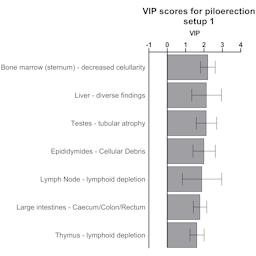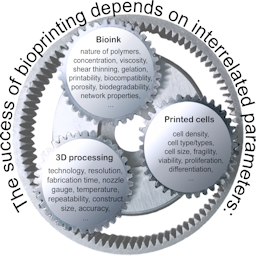Dear readers,
“If only industry were prepared to share their existing animal data, the efficacy of drug discovery could be improved and duplicate animal testing could be greatly reduced”, is a call I remember already hearing at my first World Congress on Alternatives and Animal Use in Montréal ten years ago. The eTRANSAFE project is now doing just that, finding a way to share large amounts of data without endangering intellectual property rights in accordance with the FAIR Guiding Principles so that it can be found and used by others. Katharine Briggs et al. share Food for Thought … on their experience and lessons learnt during this project to encourage others to consider this possibility.
As clinical signs are routinely documented in toxicity experiments on animals, Antero Silva and colleagues asked whether this information can be used to predict organ toxicity. Using existing data, they found associations between clinical observations and organ toxicities observed after necropsy and suggest that clinical signs could be used to reduce and refine animal use.
Jördis Klose and colleagues identify two converging adverse outcome pathways (AOPs) via which a flame retardant interferes with oligodendrocyte development in the human brain. They show that human cells are more susceptible than rat cells and are therefore more appropriate to detect human-relevant effects and that combining phenotypic and transcriptomic analyses delivers mechanistic information that can help to discover AOPs related to developmental neurotoxicity.
Invertebrate models can replace the use of vertebrate animals while still allowing the study of intact organisms. Judith Bossen et al. target different driver mutations of lung cancer oncogenes to the airways of the fruit fly. These can be used to screen for drugs that rescue the flies or that reduce tumor mass on the basis of a fluorescent marker. A panel of fruit fly models could be used to select the most promising patient-specific drug option. Gopala Mannala et al. propose the study of biofilms on medical devices in larvae of the wax moth. They show that biofilms establish on stainless steel and titanium implants coated with staphylococci when inserted into the larvae. These larvae are not rescued by gentamicin treatment in contrast to larvae infected with free bacteria. This model could be used to find new approaches to destroy biofilms without removing implanted devices.
After publishing their bottom-up physiologically-based biokinetic model to predict human tissue exposure to drugs in ALTEX two years ago, Shawn Tan and colleagues now successfully confirm how well it performs on the basis of data from a positron emission tomography (PET) study in patients investigating drug-drug interactions between rosuvastatin and cyclosporine A by comparing their predictions with the human data.
In growing physiological constructs of cells to better model human organ functionality, the substrate that allows the cells to grow and arrange three-dimensionally is a key factor. Johanna Berg and Jens Kurreck review the benefits and drawbacks of different bioprinting technologies and substrates and the current application fields of bioprinted organ models. They focus specifically on options to replace animal-derived components in bioprinting. Johanna Kühnemundt et al. follow a different approach to achieve three-dimensional growth and seed cancer cells on decellularized porcine intestine matrix under dynamic culture. They demonstrate the benefits of this approach over two-dimensional culture and show multiple ways it can be employed to model tumor growth.
The monocyte activation test (MAT) is a replacement of the rabbit pyrogen test used for batch safety testing of injectable drugs. Marijke Molenaar-de Backer and colleagues demonstrate that the MAT version using human peripheral blood mononuclear cells (PBMCs) is better performed in the presence of human serum instead of fetal bovine serum (FBS), as this allows a more sensitive detection of non-endotoxin pyrogens and enables the batch release of a blood-derived product that did not show reliable spike recovery in the FBS version of the MAT. This article relates both to this issue’s BenchMarks article and the Comments on the use of FBS in biomedical research.
The BenchMarks contribution by Elijah Petersen discusses ten considerations around defining positive control materials for in vitro assays. Positive controls are used to confirm that an assay was performed correctly and all components worked as they should. As an example, the authors argue that lipoteichoic acid, a non-endotoxin pyrogen, fulfills all ten considerations as a positive control material for the monocyte activation test.
A Letter and four Meeting Reports introduce new initiatives and collaborations covering Good In Vitro Method Practices, replacing acute systemic lethality assays, using computational methods towards replacement, applying evidence-based methods to develop AOPs, and breaking down COVID-19 pathology into AOPs.
The use of FBS in biomedical research is further debated in a Comment and a Reply. Finally, the Corners provide insight into the 3R-related activities of CAAT, Cruelty Free International, EUSAAT and EU-ToxRisk.
Hoping you enjoy this issue,
Sonja von Aulock
Editor in chief, ALTEX
Guidelines for FAIR sharing of preclinical safety and off-target pharmacology data
https://doi.org/10.14573/altex.2011181
Associations between clinical signs and pathological findings in toxicity testing
https://doi.org/10.14573/altex.2003311
TBBPA targets converging key events of human oligodendrocyte development resulting in two novel AOPs
https://doi.org/10.14573/altex.2007201
Driver mutations in major lung cancer oncogenes can be analyzed in Drosophila models
https://doi.org/10.14573/altex.1912131
Clean bioprinting - Fabrication of 3D organ models devoid of animal components
https://doi.org/10.14573/altex.2009151
Performance of monocyte activation test supplemented with human serum compared to fetal bovine serum
https://doi.org/10.14573/altex.2008261
How a GIVIMP certification program can increase confidence in in vitro methods
https://doi.org/10.14573/altex.2102261
Animal welfare and ethics in the collection of fetal blood for the production of fetal bovine serum
https://doi.org/10.14573/altex.2101271
Mind the gaps: Prioritizing activities to meet regulatory needs for acute systemic lethality
https://doi.org/10.14573/altex.2012121
Applying evidence-based methods to the development and use of adverse outcome pathways
https://doi.org/10.14573/altex.2101211
Application of computational methods in replacement – an IPAM webinar
https://doi.org/10.14573/altex.2102011
Understanding COVID-19 through adverse outcome pathways – 2nd CIAO AOP Design Workshop
https://doi.org/10.14573/altex.2102221
Characteristics to consider when selecting a positive control material for an in vitro assay
https://doi.org/10.14573/altex.2102111














